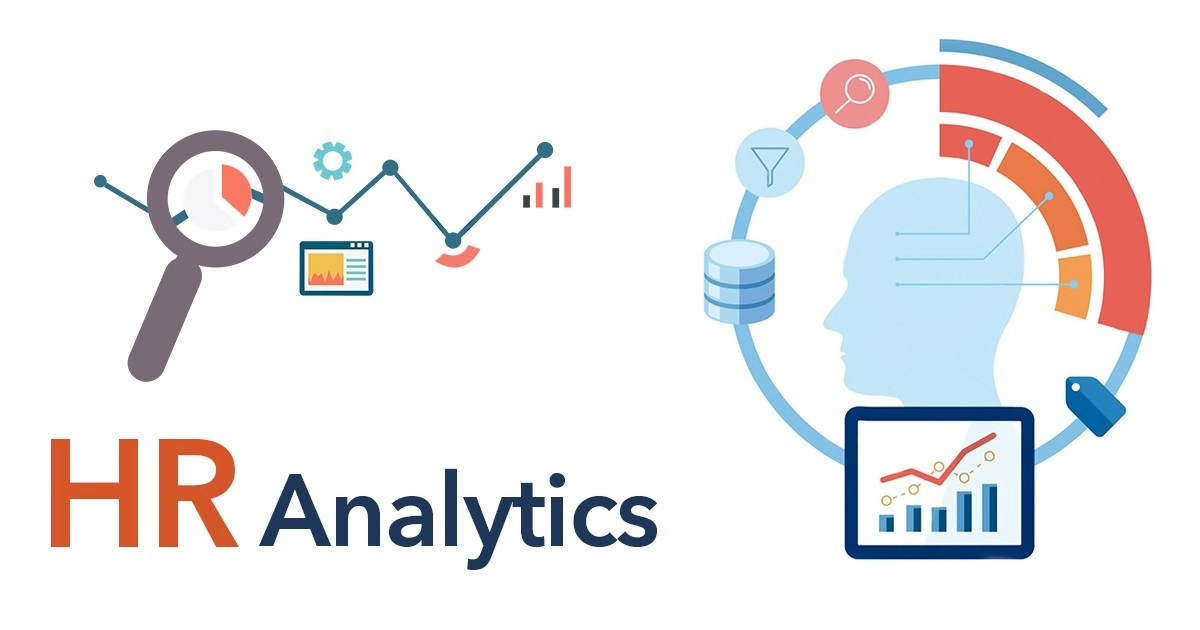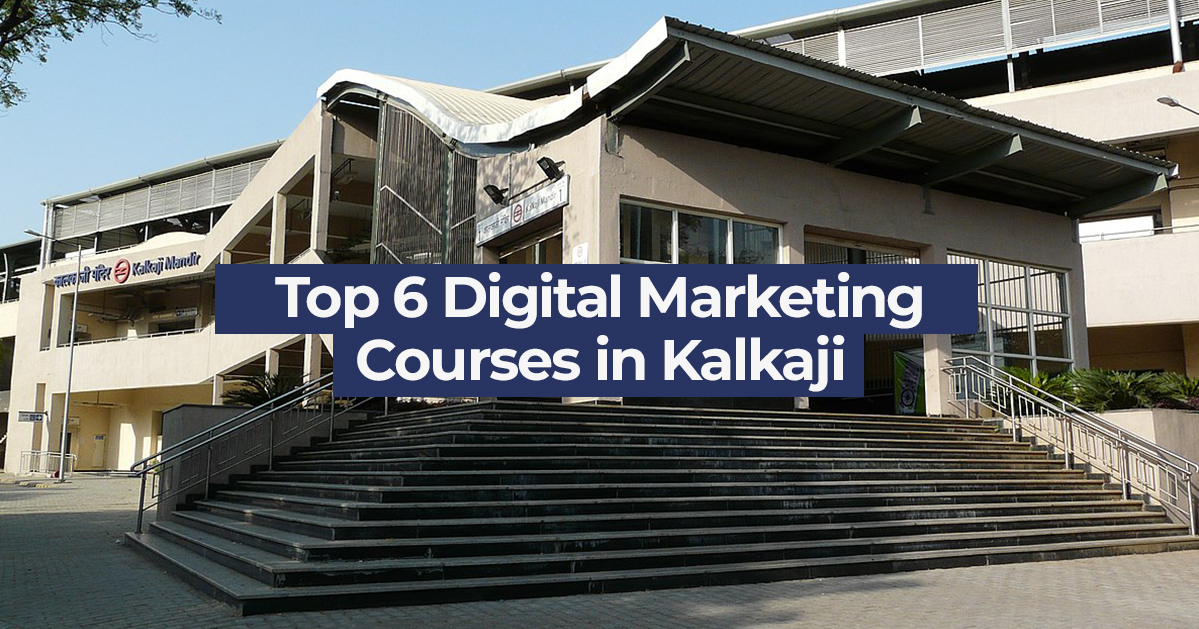While HR departments are generating data of tremendous volumes, variety, and veracity, every Human Resource the department is being questioned as to how they measure the talent. Tune here to learn about HR Analytics and its application.
HR analytics proves to be the missing link between HR data and talent analytics.
HR Departments struggled for decades to derive valuable insights from the piles of data they were sitting on.
HR analytics tools utilize sophisticated techniques of data mining and business analytics (BA) to churn the HR data and transform it into a valuable commodity for the organization.
The usage of data to predict the outcomes has been used by professionals since the early 1800s.
Lately enough with the big data boom, the data doesn’t just stagnate but is finding its use in building strategies.
Companies have been maintaining HR data warehouses for more than two decades, reports are generated based on the data.
Today it is the HR who records employee productivity, training hours, performance, employee engagement, and many more parameters.
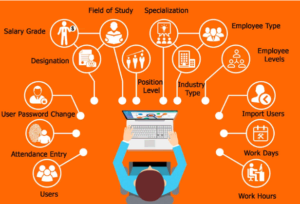
But the question is how this data collection pays off?
The answer is HR analytics or what is more commonly known as people analytics.
What is HR Analytics?
HR Analytics brings “analysis” and “statistics” together to find the application of the data pool created by HR. Plainly enough, it is a data-driven approach to manage the employees.
The purpose of HR analytics examples can be divided into two subgroups:
(i) Reaching Business Goals
This dimension of HR analytics aims to provide the organization insight into the current state of operations. Such insights expedite the fulfilment of business goals according to the set timeframes.
(ii) Data-Driven Strategy Building
It helps build prediction models to identify the strategy that could lead to the optimum return on investment (ROI) for its human resources.
HR analytics makes it easy for the HR professional to create job offers that can procure them the best talent in the market, manage and retain them to give a boost to ROI.
Learn more about HR analytics
Data Points for HR Analytics?
The data is collected across multiple points in the organization to create a pool of employee data. HR analytics tools collect data like:
(i) Employee performance
(ii) Employee attendance
(iii) Multi-rater or 360-degree reviews
(iv) Salary data
(v) Promotion data
(vi) Employee work history
(vii) Demographic details
(viii) Employee temperament data
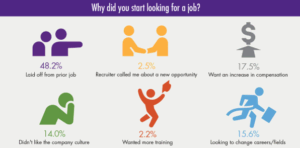
HR analytics tools help in a close alignment of employee data and HR initiatives to direct them towards the achievement of the organization’s goals.
Once the employee data is gathered, the analysts feed the same into sophisticated data modelling programs, run them through the algorithms, and predictive tools to gain insights that can be acted upon.
The insights could be represented in the reports, dashboards or visualizations. The HR analytics examples involve the below steps:
(i) Benchmark analysis
(ii) Relevant Data gathering
(iii) Data Cleansing
(iv) Data Analysis
(v) Evaluation of goals
(vi) Strategy building based on analysis
(vii) Plan execution
Practical Application of HR Analytics
The HR analytics examples are slowly edging towards practicality and it finds its use in below-mentioned areas:
1. Employee Retention
According to the stats from the US employers, the average employee replacement cost is 200% of the annual salary they draw.
When an employee leaves the organization, the cost of onboarding cost of the recruitment process and lost productivity adds to the total loss to the organization.
It becomes critical for the HR department to contain the attrition rate and it is achievable only when the HR department adapts to a data-driven approach.
Some of the aspects that drive impact iteration analysis are:
(i) Churn Rates
(ii) Per Department Attrition Rates
(iii) Onboarding Experience
(iv) Employee Interview Data
(v) Employee Performance Data
HR analytics helps identify the reasons behind attrition, and develop policies and training programs to dampen the impact of attrition.
2. Employee Performance
Around 45% of HR professionals believe that performance reviews are not accurate which makes it difficult to retain the talented employees.
Thus accurate performance evaluation is critical for retention. HR analytics tools are intelligent and leverage the employee data to identify the key players based on multiple performance parameters.
As the performance measurement and career progression are interdependent, an accurate data mining of the two could help HR professionals identify the employee expectations.
For larger organizations, HR leaders can analyze the promotion expectation and average promotion wait time to determine how the employees can be motivated to perform better and stay.
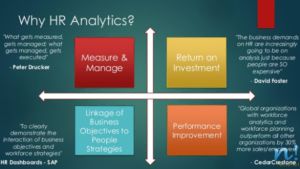
3. Employee recruitment
The talent shortage is the biggest nightmare for enterprises. Almost 42% of the employers recruiting today are worried about the selection of not so appropriate candidate.
The HR recruitment team is primarily responsible for finding out the right CV’s from the pool but before that, they need to develop a powerful ideal candidate portfolio.
This is where what is HR analytics is answered and its role is identified. The data collected from hiring managers and the performance data of previous hires for the same role are fed to the HR analytics tools to create an optimized skill set which is desired.
The data which is considered is:
(i) Identify the average number of the applicant after analyzing the applicant pool
(ii) Number of interview rounds
(iii) Offer acceptance statistics
4. Employee Development
HR plays a critical in employee development as a skill gap always exists with new recruitment.
According to American Employers, 40% of the recruited resource is not ideal for the job but with HR’s employee development programs, the skill gap can be covered substantially.
The HR Analytics tools help human resource management assess the skill needs, train the employees accordingly and allocate the right resources to the teams. This increases the agility of the organization as well as enhances employee satisfaction.
Employee development programs are running currently also but digging out the right requirement is still a challenge. In light of HR analytics, more refined employee development programs can be led.
5. Employee Engagement
Attracting the best talent to the organization is an art and HR strive hard to achieve it. Having appropriate employee engagement is critical for an organization to attract and retain the employees.
As critical as it is to identify the factors that drive employee engagement, it is equally difficult to find the right metrics.
The HR needs to do Statistical analysis of employee engagement data surveys to identify the data which leads to better employee engagement.
6. Developing Compensation Programs
Employee compensation is known to contribute 33% to employee retention and performance. As it still remains the biggest investment by the business expense, its appropriation and accuracy needs go without saying.
Both internal and external factors impact the compensation plans that is why this area requires more precise automation.
The HR needs to analyze what the competitors are offering their resources and what kind of compensation is inducing higher retention.
Overall Benefits of HR Analytics
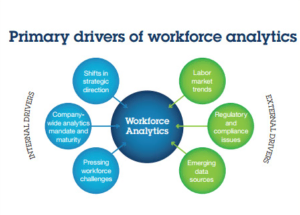
After thoroughly analyzing the role of HR analytics it can be deduced that it can directly lead to the operational enhancement and more strategic hiring.
As the organizations are adapting HR analytics tools, the ROI is increasing. Let us take a look at what are the changes when HR analytics examples are adopted.
(i) Decreased attrition
(ii) Manual task automation
(iii) HR Process improvement
(iv) Refined hiring practices
(v) Enhancement in employee productivity
What are the Roadblocks in the Adoption of HR Analytics?

HR analytics requires a lot of data handling and this could prove to potential challenge enterprises need to overcome.
The practical implementation of HR analytics is not easily achievable and some of the challenges that retard the adoption rates are:
(i) Access to the right skill set who can work with the HR analytics tools
(ii) Aggressive Data Cleansing
(iii) Maintenance of high-quality Data quality
(iv) Data privacy
(v) Data compliance
(vi) Proving the value of reports to the leadership for implementation
(vii) Identifying the impact of strategies on ROI
The Future of HR Analytics
Implementation complex statistical analysis using HR analytics can lead to seismic shifts in the HR one.
The smart organizations will grow strategically if they on-board the data-driven culture that gives deep insights into the market.
It is increasingly becoming a business-critical tool that takes HR professionals beyond the intuitive decision making.
After an aggressive and sophisticated analysis of the data pool, the consensus needs to be gained before the data analysis reports can be implemented in the practical landscape.
Therefore, it becomes increasingly necessary to have leadership trust in HR data and HR analytics.
Over the last five years, the adoption of HR analytics has risen significantly. The tools being used are moving from static forms to more dynamic like the real-time cloud-based solutions.
The HR professionals are witnessing the infiltration of such solutions in recruitment departments, education development departments, and performance management teams.
Today around 45% of large enterprises and 51% of small and mid-sized companies are increasingly adopting the latest HR technology for efficient HR analysis.
Of course, the trend is expected to gain traction, as it works in favor of employees too who are being approached for more appropriate jobs as the talent pool data is being churned precisely.
HR Analytics also ensures qualified candidates to be retained so that the companies stay competitive in the future also. This kind of predictive model of analytics is very soon going to become an indispensable tool for HR professionals.
So, if you are in the HR domain and looking forward to accelerating your career with proper analytical knowledge, join our Data Science Using Python Course.
